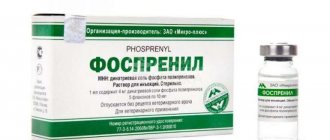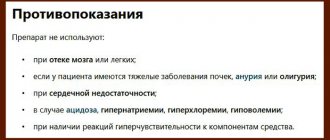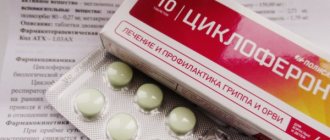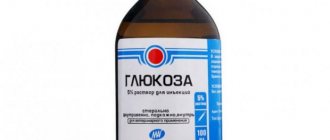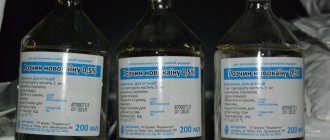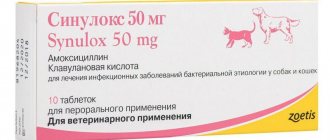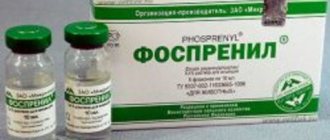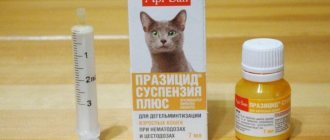When to use
Experts recommend using it in addition to the main treatment.
But for what diseases did the medicine show maximum effectiveness? It has proven itself best in the treatment of cardiac and pulmonary pathologies, when the risk of developing severe forms of hypoxia is too great. There are other indications for use. For example, Mexidol can be successfully used in the preoperative or postoperative period, especially when general anesthesia is planned (or has already been used). The medicine in this case also helps to avoid many serious complications. But this is not the entire list of possible prescriptions.
Thus, in practice it has been found that in cats suffering from long-term non-healing trophic ulcers, atopic dermatitis and other pathologies of the skin, accompanied by the formation of long-term non-healing defects, the use of Mexidol gives an excellent effect. Veterinarians say that the likelihood of successful treatment in a short time increases by 40-53%. The exact numbers depend both on the general condition of the animal and on its gender, age, weight and breed.
Mexidol is a complex-action drug that is firmly rooted in therapeutic practice and is actively used to treat a wide range of diseases of the nervous, cardiovascular and other systems. A special form of Mexidol-Vet is intended for the treatment and prevention of diseases in domestic animals - dogs and cats.
Indications for use
Mexidol Vet has extensive indications for use; it is prescribed for the complex treatment of a large number of pathologies.
These include:
- insufficiency of cardiovascular and pulmonary types (in chronic and acute form);
- prevention of consequences in the postoperative period;
- skin diseases and damage;
- therapy and prevention of stress associated with exhibitions or the departure of the owner;
- diseases of the brain of the head due to circulatory problems or after injuries;
- prevention of infectious diseases.
The drug is also often prescribed to maintain health in older individuals with diseases of the cardiovascular system, skin, joints, and general weakness (loss of strength).
Diseases for which Mexidol-Vet is prescribed
Indications for use of the drug Mexidol-Vet are:
- The presence of decompensation of cardiac function or cardiopulmonary failure, occurring acutely or chronically.
- Preventing complications during and after anesthesia.
- Toxic effects caused by acute purulent infectious lesions: purulent peritonitis - inflammation of the peritoneum provoked by pyogenic microflora;
- purulent pancreatitis - inflammation of the pancreas with the participation of pyogenic microbes.
- dermatitis, including those resulting from insufficient blood supply to the skin;
- transportation;
participation in the exhibition.
- neurodermatitis - skin diseases that occur as allergic dermatitis and occur against the background of impaired innervation;
Mexidol-vet for cats: reviews, instructions for use, contraindications
Reviews of veterinary Mexidol are mostly positive. Typically, dog and cat owners characterize it as an effective remedy for strokes, brain injuries, and senile disorders. Not everyone is happy with its effect in accelerating recovery processes after operations, injuries, and serious illnesses. Basically, people speak of Mexidol as a potent drug that should be used in animals only according to strict indications.
We suggest you familiarize yourself with: Spotted cat breeds
Thus, it is possible to highlight the positive and negative characteristics of the drug that consumers noted.
Pros:
- effective in treating diseases of the nervous system, heart and blood vessels;
- improves the well-being of elderly pets;
- affordable;
- Available in almost all veterinary pharmacies;
- well tolerated and does not cause adverse reactions.
Minuses:
- painful injections;
- low effectiveness in the treatment of diseases of internal organs, during operations and injuries;
- insufficient calming effect.
Antihypoxant and antioxidant produced in Russia – are you confident in the working capabilities of such a drug? Artificially synthesized Mexidol-Vet, as the developers claim, fills cells with energy and cleanses them of free radicals.
Content
It sounds tempting, but what are things really like?
Mexidol-Vet for cats is a novelty in the veterinary world, which has a fairly wide range of capabilities:
- Heart failure (acute, chronic, cardiopulmonary);
- Cerebrovascular accidents;
- Epilepsy;
- Episyndrome;
- Past neuroinfections;
- Prevention of complications after anesthesia;
- Recovery after surgery or injury;
- Purulent and inflammatory processes;
- Skin diseases;
- Wound healing;
- Stress;
- Age-related disorders of the body.
Dosage
The medicine is dispensed in the same packaging - either in tablet form, 10 pieces in contour cells, or in injection form in ampoules of 1 or 2 ml.
The treatment regimen is prescribed only by a veterinarian. But by default it looks like this:
- The first day - 10-15 mg per 1 kg of cat’s weight;
- Subsequent doses are reduced.
The course of treatment is up to 15 days.
The drug is given to the animal once a day.
You can read about how to give your cat pills here.
The drug can be injected intramuscularly or intravenously (stream or drip).
The duration of the jet injection is 7 minutes. Drip - 60 drops per minute.
IMPORTANT! In the acute period of the disease, give preference to the injection form of Mexidol-Vet, it will work more effectively.
Indications
In the process of many scientific studies under the leadership of the candidate of veterinary sciences Voloshin E. A. it was possible to prove the effectiveness and safety of using the drug Mexidol in the treatment of such pathological conditions in kittens as:
- Acute form of damage to the myocardium and lungs. The drug prevents disturbances in the blood circulation process in the body and in the functioning of the nervous system.
- Closed-type traumatic brain injury. Mexidol prevents the occurrence of severe consequences.
- Dermatological pathologies. Improves the movement of blood fluid throughout the body.
- . Reduces the frequency of attacks and generally improves the condition of a sick cat.
- Stroke. Speeds up your pet's recovery.
- Serious stressful experiences. Calms, increases endurance of the cat's body and improves blood circulation through the cerebral vascular system.
pharmachologic effect
The medicine has a large number of positive reviews among breeders and specialists. First of all, this drug is prescribed for pathologies and diseases associated with insufficient saturation of the tissues of the animal’s body with oxygen. After suffering the shock of moving, heavy physical exertion, or a scheduled operation using anesthesia, medicine is vital for the animal. Pets bounce back much faster and regain their strength. With a normal supply of oxygen to all organs, the likelihood that a pet will live a long and happy life increases.
Security measures
Mexidol is a non-toxic drug
However, when using it, you must follow the rules of hygiene and precautions:
- the drug is administered using rubber gloves;
- when using, it is forbidden to eat or smoke;
- after using the medicine, you should wash your hands thoroughly using detergent;
- used packaging and syringes should be disposed of;
- if you have an individual intolerance to the drug, you must avoid contact with the drug. If the product gets on the skin or mucous surfaces, rinse them thoroughly with running water and take an antihistamine.
How to use
There are several developed methods of using the drug. Mexidol in both forms can be taken both during the acute period of the disease and when the animal is recovering from an illness. The instructions for using the medicine contain detailed information, however, in each specific case, all prescriptions must be made by a veterinarian.
- When an acute condition is relieved, Mexidol injections for cats are more often used, but tablets can also be prescribed if it is difficult to inject an animal for some reason. In the form of injections, the medicine is administered in a volume of 15 mg per 1 kg of weight. Course duration is from 5 to 15 days. The duration of the treatment period is prescribed by the doctor. The number of tablets is also calculated - 15 mg per 1 kg of cat weight. The method of administration of the drug is chosen by the veterinarian.
- To prevent the consequences of anesthesia. The drug is given in tablet form to the cat for 3 days before the intervention and 3 days after that. The composition is used in injections extremely rarely - according to medical instructions and in a dosage recommended by a specialist.
- Heart and lung diseases. The medicine is used only in tablet form. Duration of treatment is up to 14 days. The dosage of the medicine and the number of tablets per day are determined by the veterinarian depending on the age and condition of the cat.
- Prevention of stress disorders. Only tablets are used. The drug is prescribed at a dose of 5 mg per 1 kg of cat weight for 5 days before the stressful moment. If the cat is very emotional, then the medicine is prescribed at 7.5 mg per 1 kg of weight for 3 days before the stressful moment.
- Supporting cats with chronic diseases. The use of Mexidol in tablets is prescribed. It is recommended for a cat to undergo a course lasting from 2 to 3 weeks every 3 months. The amount of the drug is determined by the veterinarian depending on the cat’s disease and its age.
When the instructions for using Mexidol for cats are followed, no side effects are observed. Animals tolerate the drug well. If an overdose occurs, the cat becomes lethargic and drowsy. In such a situation, urgent assistance from a veterinarian is required. A threat to the life of a cat due to an overdose of Mexidol rarely occurs.
Often in veterinary medicine there is a need to stimulate the metabolism of a recovering animal so that it recovers faster. The modern pharmacological industry has invented quite a lot of drugs for this, but among all this variety there are not so many really effective drugs. A pleasant exception is Mexidol for dogs. Oddly enough, the product is of domestic origin, has a reasonable price and is very effective, which has been repeatedly confirmed both by the results of clinical trials and by the breeders themselves.
The medicine is truly unique. Firstly, it allows you to neutralize the negative effects of hypoxia on the organs and tissues of the body. Secondly, it increases the strength of cell membranes, protecting them from the effects of various negative factors. Thirdly, it helps to significantly increase the dog’s resistance to stress, even severe ones. Finally, the product can be successfully used in cases where rehabilitation of a pet is required after severe functional circulatory disorders caused by injuries or complex surgical operations.
Thus, the indications for use are quite easy to figure out on your own. We will provide only a list of the most important cases in which the use of this drug is highly desirable:
Preparing the animal for general anesthesia.
Postoperative period.
Preparing a pet for an exhibition, during which it will not only experience severe stress, but may also become infected with something, since the symptoms of many diseases appear too late, and therefore sick dogs may end up at such events.
Improving the overall quality of life of old dogs whose body tissues may experience constant hypoxia.
Support for dogs suffering from cardiovascular disease, especially cardiac and.
Note that, unlike its analogues, Mexidol can be used even on puppies and pregnant bitches, although in this case its use should be supervised by an experienced veterinarian.
Directions for use and dosage
The course of treatment must be completed in accordance with the prescription of the veterinarian. Contraindications for use are liver and kidney diseases, intolerance to one of the components of the drug.
The drug is prescribed according to the type of pathology and the form of the drug.
| Type of pathology | Injections | Pills |
| Acute period | Intravenously/intramuscularly; 10-15 mg/1 kg; further there is a decrease to 5 mg/1 kg; The medicine should be taken for 5-15 days | 10-15 mg/1 kg of weight; then reduced to 5-7.5 mg/1 kg |
| Anesthesia and post-anesthesia consequences | Intravenous or intramuscular administration; 10-15 mg/1 kg; 2-3 days before surgery and after surgery several times a day; for long-term anesthesia - 20 mg/1 kg | 2-3 days before surgery or for 2-3 days after it twice a day |
| Therapeutic and prophylactic agent in veterinary geriatrics | Age over 7 years; intramuscular administration; 10 mg/1 kg body weight twice a day; Duration of treatment - 5 days - 1 week at intervals of 3-4 months | Cats and dogs over 7 years old; 5 mg/1 kg weight; twice a day for 15-30 days with a frequency of 3-4 months |
| Heart and lung diseases | — | 10-15 mg/1 kg; several times a day; duration of therapy - 7-10 days; then the dosage is reduced by half; course of treatment - up to two weeks |
| Chronic illness | — | 2-4 times a year; duration of treatment - 3 weeks; 5-7.5 mg/1 kg; twice a day |
| Moving, exhibitions and competitions | — | 5-7.5 mg/1 kg several times a day 3-5 days before the event |
No side effects have been identified when the dosage is followed correctly. Overdose may cause your pet to become drowsy. When administering the drug intravenously, it must be diluted with saline or water for injection. If you miss a dose of the drug, you should continue treatment according to the prescribed regimen.
The drug is compatible with other medications. In acute diseases, it is necessary to resort to intravenous administration of the drug, as it has a great effect. If the injections cause pain in the animal, you need to start taking the medication in tablet form. When using tablets, allergic reactions are possible.
It is necessary to follow safety rules when using the drug. Before using the injection solution, wash your hands with warm water and soap. Direct contact with the drug should be avoided. After completing the procedure, you must also wash your hands.
If the medicine gets on the mucous membranes and skin, rinse the contact area with water. If an allergic reaction occurs due to accidental ingestion of the drug into the body, you must contact a specialist at the nearest medical facility for help.
Storage conditions: at a temperature of 2-25 °C. It is recommended to store the drug in a place protected from light, out of reach of children. Shelf life: 3 years from the date of manufacture.
Similar medical products
A possible alternative to the drug may be Mexibel.
Absolute analogues are the pharmaceutical preparations "Mexidol" and "Mexidol-Vet", which have identical therapeutic effects and contain the same component as the active substance - ethylmethylhydroxypyridine succinate. In pharmacy chains you can find other analogues of Mexidol, which differ in the list of pathologies for which this or that medicine is effective. So, pharmacists can recommend Mexibel, Mexicor, Mexidant. If you are allergic to the main ingredient in such medications, veterinarians select a replacement that contains another active ingredient, but the therapeutic effect remains unchanged. This could be the medicine “Hypoxen”, “Vitagamma”, “Riluzole”, “Actovegin”. Only the doctor treating the cat should select a replacement.
Pharmacology of the drug
The veterinary drug "Mexidol Vet" restores blood circulation in the body tissues, normalizes the membrane part of the cells and has antioxidant properties. It is able to protect the body from the effects of certain diseases (oxygen starvation, shock, circulatory problems, infections). The drug also slows down platelet aggregation and cholesterol levels in the blood.
The drug accelerates the activation of glucose and its conversion into glycogen through oxidation with oxygen. When taken, the level of ATP in cells increases noticeably and the number of free radicals decreases. Mexidol Vet also provokes mitochondria to produce energy and “turns on” enzyme systems, improving the transmission of nerve-type impulses at synapses.
Manufacturer, composition and principle of action of the drug
The veterinary drug "Mexidol-Vet" is produced domestically, which is located in Moscow. The active component of the drug is ethylmethylhydroxypyridine succinate.
The drug acts at the cellular level. It enhances aerobic glycolysis, prevents the inhibition of oxidative processes in the Krebbs cycle during hypoxia, while increasing the amount of ATP and creatine phosphate, and activates energy synthesis by mitochondria.
The antioxidant properties of the drug include increasing resistance to free radicals, which lead to shock, oxygen starvation, and ischemia. It has a positive effect on the blood: improves circulation, strengthens the membranes of platelets and red blood cells, reduces the amount of cholesterol and low-density lipoproteins. Mexidol-Vet has a beneficial effect at the neural level: it improves the transmission of impulses in synapses and the transport of neurotransmitters.
How to use Mexidol-Vet
The exact dosage of the drug, frequency and duration of administration can only be determined by a specialist based on the diagnosis, the general condition of the pet, as well as the purpose of its use. But there are several general recommendations that are equally suitable for all cases:
the dose of the drug is calculated based on the weight of the pet; the injection solution is administered to cats intramuscularly or intravenously; when administered intravenously, the medicine is diluted with water for injection or saline in a ratio of 1:2; the tablet form is given forcibly on the root of the tongue after eating; Concurrent use of Mexidol-Vet with other drugs is allowed; if you miss another dose of the drug, take it again at the recommended dosage; It is prohibited to eat, drink or smoke during the procedure; people suffering from allergic reactions to the components of the product should take special care, and if negative reactions occur, they should seek advice from a medical institution; After using the drug, you must wash your hands thoroughly with soap.
I had the opportunity to use Mexidol-Vet only once after our pet had extensive lichen. Since we picked up our cat on the street, the next day at the veterinarian’s appointment she was diagnosed with a whole bunch of problems.
One of the main problems was lichen. Foci of the fungus were located near both ears, on the paw and on the muzzle. The lichen was advanced, so along with the main treatment, the veterinarian advised us to take Mexidol-Vet tablets as a drug that stimulates the processes of skin and coat restoration.
This medicine seemed quite expensive to us, but we still had to buy it for the sake of the pet’s health. The result after use exceeded all expectations. After two to three weeks, hairs began to appear at the site of the lesions.
MEXIDOL-VET injection solution 5%
COMPOSITION AND FORM OF RELEASE
1 ml of MEXIDOL-VET solution for injection contains 25 mg or 50 mg of Mexidol (ethylmethylhydroxypyridine succinate) as an active ingredient, as well as water for injection.
| Name | price, rub. | per unit |
| MEXIDOL-VET injection solution 5% 2 ml, 10 ampoules/pack. (storage conditions +2…+25) | 47.30 | ampoules |
| MEXIDOL-VET injection solution 5% 5 ml, 5 ampoules/pack. (storage conditions +2…+25) | 104.50 | ampoules |
In appearance it is a colorless or slightly yellowish transparent liquid. Available in the form of a 2.5% and 5% sterile solution, packaged in glass ampoules of 1 ml and 2 ml, respectively. Pack 5 ampoules in blister packs made of polyvinyl chloride film, which are placed 2 pieces in cardboard boxes.
PHARMACOLOGICAL PROPERTIES MEXIDOL-VET has pronounced antioxidant, antihypoxic and membrane protective properties. Increases the animal's body's resistance to various damaging factors and oxygen-dependent pathological conditions (shock, hypoxia, ischemia). Improves microcirculation and rheological properties of blood, stabilizes the membrane structures of platelets and red blood cells during hemolysis, has a lipid-lowering effect, reduces the content of total cholesterol and low-density lipoproteins.
When administered parenterally, MEXIDOL-VET solution quickly enters the blood, organs and tissues of the animal. It is excreted from the animal's body in urine, mainly in glucurone-conjugated form. In terms of the degree of impact on the body of warm-blooded animals, MEXIDOL-VET solution for injection is classified as a moderately hazardous substance and does not have locally irritating, cumulative, embryotoxic or teratogenic properties.
INDICATIONS The drug MEXIDOL-VET is prescribed to dogs and cats for preventive and therapeutic purposes independently and in complex therapy.
- Facilitates the onset of anesthesia
- Allows to reduce anesthesia and post-anesthesia complications
- Helps reduce age-related signs of aging
- Improves coat condition
- Safe and easy to use
The drug MEXIDOL-VET has a positive effect on the efficiency of oxygen metabolism in the cell, stabilizes the structure of cell membranes and the functional activity of mitochondria.
Taking MEXIDOL-VET before and after surgery makes it easier for the patient to go through anesthesia, reduces anesthetic risks and reduces the likelihood of an unfavorable course of the wound process.
IMPORTANT! To reduce relative local hypoxia, it is necessary to switch to the tablet form of MEXIDOL-VET. The dose, duration of treatment and frequency of use of MEXIDOL-VET are prescribed by the attending veterinarian depending on the physiological state of the animal and the course of the disease.
The use of MEXIDOL-VET solution for injection does not exclude the use of other means of pathogenetic and symptomatic therapy
The dose, duration of treatment and frequency of use of MEXIDOL-VET are prescribed by the attending veterinarian depending on the physiological state of the animal and the course of the disease. The use of MEXIDOL-VET solution for injection does not exclude the use of other means of pathogenetic and symptomatic therapy.
SIDE EFFECTS There are, as a rule, no side effects or complications when using the drug in accordance with the instructions. Intravenous administration of the drug may be accompanied by pain.
CONTRAINDICATIONS Contraindications for use are acute dysfunction of the liver and kidneys, increased individual sensitivity to the drug. The medicinal product is not intended for use in productive animals.
SPECIAL INSTRUCTIONS No special precautions are provided. STORAGE CONDITIONS: In a dry place, protected from light and out of reach of children and animals at a temperature of 2 to 25 ºС
Shelf life - 3 years
STORAGE CONDITIONS: In a dry place, protected from light and out of reach of children and animals, at a temperature of 2 to 25 ºС. Shelf life: 3 years.
PLEASE REFER TO INSTRUCTIONS FOR USE FOR FULL INFORMATION.
Features of the use of Mexidol-Veta in cats
Dosage and treatment regimens depend on the form of Mexidol-Veta.
How to use tablets correctly
Mexidol-Vet tablets should be given to cats after meals.
The dosage and duration of treatment depend on the complexity of the disease. There are several ways to feed the tablet to a cat:
- place the tablet on the root of the animal’s tongue (reflex swallowing will work);
- crush and mix the medicine with drinking water (for example, in a spoon or syringe without a needle);
- use a tablet dispenser.
It is convenient to give a tablet to a cat in three ways: forcibly, by suspending the medicine with water or using a tablet dispenser.
Table: tablet treatment regimen
Experienced cat breeders often make decisions about the use of medications on their own. Sometimes cats are misdiagnosed, because without an examination it is impossible to get a complete picture of the animal’s condition. Therefore, if you doubt the correctness of your choice, contact your veterinarian. Let a specialist examine your cat, help you calculate the dosage, and adjust your treatment regimen. If visiting a veterinary clinic is not possible, at least call the veterinarian on duty.
Although Mexidol-Vet is available without a veterinarian’s prescription, consultation with a specialist is still advisable.
Use of medication in injection form
Mexidol-Vet is administered intramuscularly or intravenously (depending on the severity of the disease).
Not every owner can inject the solution into a vein; it is better to go to a veterinary clinic for such an injection. Therefore, if you do not have such experience, choose the second option. Here is the procedure for intramuscular administration:
- Remove the syringe from the package. It is convenient to use an insulin syringe, as it has a more detailed scale and a thin needle.
- Prepare the ampoule. You need to file down the thinnest part of its neck and break off the “top”. For safety reasons, you can wrap the ampoule in a napkin (this way you will not cut yourself on the fragments).
- If the medicine is in a bottle, then you need to bend the edge of the notch on the aluminum cap so that the rubber stopper appears.
To draw the solution from the bottle, it is not necessary to completely remove the metal cap - Without touching the needle with your hands, remove the cap from the syringe.
Insert the needle into the ampoule or vial (through the rubber stopper) and draw out the required amount of solution. To make the syringe plunger more pliable, the container with the solution can be turned upside down. When drawing liquid from the container, do not touch the needle (if necessary, you can touch the cannula) - Pull out the syringe and release all the air from the syringe.
A drop of solution should appear at the tip of the needle. Air bubbles that are not released from the syringe can enter the cat’s blood vessels, this will lead to an embolism and the cat will die. - Hold the cat still and insert the needle into the muscle.
It is convenient to inject into the outer part of the thigh (hind limb). The needle should go in 1–1.5 cm. If you choose the wrong injection site, the needle can damage soft tissues - The medicine should be administered in a smooth motion, without “rocking” the syringe. Remove the needle and calm the cat. There is no need to rub the injection site.
My cat is difficult to give injections, but I learned how to give injections as quickly and painlessly as possible for the cat. It is ideal when the cat does not move, and there are several ways to immobilize it. For example, an older cat freezes if something tight is put on her head (sock, glove, etc.). My youngest slips out of things, so I use a clothespin to immobilize her. A soft clamp on the withers, and the kitten cannot move. True, after injections I always pamper my pets (I pet them, give them treats, etc.)
Table: scheme of application of Mexidol-Veta
Mexidol-Vet can be used by both kittens (from 2 months) and pregnant cats, but this must be done under the supervision of a veterinarian. It is not advisable to treat a cat nursing kittens under two months of age with this drug.
Complete instructions for use of the drug Mexidol Vet for dogs
The medicine is produced in several forms: tablets of 50 and 125 mg, as well as a 2.5% solution in 1 ml ampoules, a 5% solution in 2 or 5 ml ampoules.
The active component of Mexidol-Vet is ethylmethylhydroxypyridine succinate. The composition of the excipients differs from the “human” drug; it is specially adapted for the animal body. Thus, the Mexidol-Vet solution does not contain the preservative sodium metabisulfite, and the tablets additionally contain povidone, crospovidone, colloidal silicon dioxide and microcrystalline cellulose.
Mechanism of action
The therapeutic effect of Mexidol is based on several mechanisms:
- destruction of free radicals - highly active forms of oxygen that destroy cell membranes and provoke their death;
- activation of energy metabolism – production of a large amount of energy even under unfavorable external conditions;
- strengthening cell membranes – increasing cell viability in extreme conditions;
- calming effect, suppression of seizures;
- forcing the transmission of a nerve impulse from one nerve cell to another;
- normalization of blood flow through small vessels;
- preventing the formation of blood clots in the vascular bed;
- reducing the concentration of harmful cholesterol fractions in the blood.
Indications
It is thanks to this multifaceted action that Mexidol-Vet is prescribed for the prevention and treatment of a large number of pathological conditions in animals. Indications for its use:
- strokes - acute cessation of blood flow in the brain;
- disruption of the lungs and heart in acute or chronic form;
- injuries and inflammatory diseases of the brain, as well as their consequences;
- epilepsy - seizures;
- recovery period after any injuries or surgical interventions;
- prevention of complications after general anesthesia;
- age-related disorders in the functioning of all organs and systems;
- stressful situations (competitions, exhibitions, transportation);
- purulent diseases of the abdominal organs;
- skin diseases of an inflammatory or allergic nature.
The problem is that dog and cat owners do not always realize in time that something wrong is happening to their pet and it’s time to go to the vet. Often the symptoms of a stroke or internal organ disease in animals have subtle manifestations. Owners should be wary of the following changes:
- increased aggression, excitability, sleep disturbance;
- drowsiness, lethargy, fatigue;
- convulsive twitching, trembling of limbs;
- loss of coordination of movements, staggering;
- shortness of breath, excessive breathing;
- reluctance to make contact, desire to hide, to remain alone.
It is, of course, impossible to make a diagnosis based on these symptoms alone, but this is a serious reason to contact a veterinarian who will conduct an additional examination.
Contraindications
There are few contraindications to the use of Mexidol-Vet; it should not be used:
- in case of renal failure in an animal;
- with severe liver dysfunction;
- in the presence of hypersensitivity to the components of the drug.
For nursing cats and dogs, as well as for pets under 2 months of age, Mexidol-Vet is recommended to be given under the supervision of a veterinarian. Mexidol is not used in the treatment of productive animals (cows, pigs, sheep, goats and others).
Adverse reactions
When using Mexidol, they rarely occur. These include:
- allergy phenomena;
- pain at the injection site;
- drowsiness, lethargy.
If drowsiness occurs, it is recommended to reduce the dose of the drug.
Mode of application
The official instructions for the use of veterinary Mexidol describe in detail the regimens for prescribing the drug for various pathological conditions. The dosage of Mexidol-Vet for cats and dogs is selected individually at the rate of 10-15 mg per 1 kg of weight in the acute stage of the disease or 5-7.5 mg per 1 kg for chronic diseases. When administered intravenously, the medicine is dissolved in saline and given in droppers or as a slow stream.
We suggest you read: How to determine if a cat is pregnant, tips for breeders
In acute cases (stroke, traumatic brain injury), Mexidol is first given in injections, intravenously, subcutaneously or intramuscularly 2-3 times a day for 10 days, and then they begin to give it to the pet in tablets with the same frequency. To maintain the normal functioning of an animal under stress, it is recommended to give the drug 3-5 days before the expected traumatic situation and for 5 days after it for faster recovery.
To prevent age-related changes, Mexidol-Vet is prescribed to animals in courses starting from the age of 7 years. These recommendations are conditional, since the rate of aging depends on the breed of the pet. In some cases, the start of preventative treatment can be delayed by several years. Elderly cats and dogs are given Mexidol in a minimum dose for a course of up to 1 month. A repeated course can be started no earlier than after 3 months.
Mexidol can be easily combined with other drugs: it does not interact with them and does not weaken their therapeutic effect.
For many owners, the urgent question is how to give an animal a Mexidol tablet so that the pet does not spit it out and choke. The following options are possible here:
- place the tablet on the root of the tongue so that the pet cannot spit it out;
- crush the pill and dissolve it in water, which is then given using a pipette or syringe;
- use a tablet dispenser - a special device like a syringe through which the tablet is pushed into the animal’s mouth.
Mexidol has no direct analogues for the active substance in veterinary practice. Other drugs intended to correct oxygen deprivation and stimulate metabolic processes and energy can be considered analogues in terms of pharmacological properties. These are Emicidin, Actovegin, Emidonol, Ligfol.
Mexidol intended for the treatment of humans should not be given to pets, even in an adequate dose. This drug is not adapted for veterinary use and has not been studied in animals, so the consequences of its use may be unpredictable.
In this article I will talk about the drug Mexidol Vet. I will describe the instructions, the composition of the drug, its release form. I’ll tell you how it works and list the indications for use. I will give the dosage and duration of treatment. I'll tell you about side effects and contraindications.
The main active ingredient is Mexidol, the scientific name is ethylmethylhydroxypyridine succinate. The composition also includes additional components: lactose, magnesium stearate and potato starch in tablets, and a solution for injection in liquid form.
The medicine is available in two forms:
- Pills. They are flat on both sides and round in shape, white or slightly creamy in color. There is a dividing strip in the middle. The drug goes on sale in blisters (10 tablets each) and branded cardboard boxes (2 blisters inside). The active ingredient in one tablet can be 50 or 125 mg.
- Solution in ampoules for injection. This is a transparent and colorless liquid (perhaps a slightly yellowish tint). Available in ampoules, the dosage can be 2.5% (25 mg Mexidol) or 5% (50 mg Mexidol). It goes on sale in branded cardboard packaging. Each of them contains 2 plastic packages of 5 ampoules (dosage 2.5% - 1 ml, 5% - 2 ml).
Mexidol vet is available in tablets and ampoules
Mexidol vet also stimulates blood supply to the brain and improves metabolism in its cells and tissues.
We invite you to read: Turkish Angora – types of breed, how to properly care for it and what can you feed your pet?
Indications for use are as follows:
- Prevention of complications caused by the administration of anesthesia. It is used before and after operations.
- Acute failures: cardiopulmonary and cardiovascular.
- Diseases in which rapid tissue necrosis occurs due to inflammatory processes with the formation of pus. Such diseases include peritonitis (leakage of pus into the peritoneum), necrotizing pancreatitis.
- Skin diseases: dermatitis, wounds, ulcers, eczema. Mexidol Vet also helps improve the condition of the skin and coat.
- Diseases affecting the brain: epilepsy, head injuries, circulatory disorders, etc.
- Increased physical and emotional stress: competitions, exhibitions, moving, etc.
- Chronic diseases with mild symptoms in older animals.
The drug Mexidol Vet is used not only for treatment. It can also be used to prevent certain diseases. Mexidol vet can be used for a wide range of diseases
The dosage and regimen depends on the purpose of use of the drug. The tablets are fed to the animal after meals up to 3 times a day. During an exacerbation of the disease, the therapeutic dosage is 10-15 mg per kilogram of weight. After the acute condition is relieved, it is reduced to 5-7.5 mg (prophylactic dose).
If your pet suffers from cardiopulmonary or heart failure, he is given tablets three times a day in a therapeutic dose for 10 days. Then the dosage is reduced by half, and treatment is continued for another 2 weeks. In the chronic form, the tablets are given in courses: up to 4 times a year for 3 weeks (the dog is fed the drug in a prophylactic dose in the morning and evening).
If the animal is planned to undergo anesthesia, the medication is started 2-3 days before the desired date and another 3 days after it in a prophylactic dose twice a day. Before stressful events (exhibitions, competitions, etc.), the drug is given 5 days before them in a similar dosage, twice a day.
For older dogs (after 7-8 years), Mexidol vet is given 5 mg per kilogram of weight for 2-4 weeks every 4 months.
The drug in injection form is used as follows:
- In case of exacerbation of the disease - 10-15 mg per kilogram during the first 2-3 days, then the dosage is reduced to 5 mg and therapy is continued for another 10-13 days.
- If the dog is undergoing long-term anesthesia, Mexidol vet is administered in small doses during surgery at a dose of 20 mg per kilogram.
- For elderly dogs, the medicine is injected into the muscle at a dose of 10 mg per kilogram in the morning and evening, the course duration is 7 days. Then they switch to tablets.
Both tablets and solution combine well with other medications.
Mexidol vet in ampels of ml.
The drug has no side effects if you strictly follow the instructions.
Contraindications include only increased sensitivity of the pet to some components of the medication.
Release form and composition
The main component of the drug is ethylmethylhydroxypyridine succinate. 1 unit of the drug contains 50 or 125 mg. During production, additional substances are added: lactose, potato starch, magnesium stearate (sometimes it is replaced with calcium). The composition of Mexidol Vet (125 mg tablets) contains additional white clay and sodium carboxymethylcellulose.
The tablets have a round, flattened shape with a slot (notch) in the middle and weigh 0.3 g. The color can vary from white to cream.
They are packaged in 10 units in packages with cells highlighted by contours. They go on sale in cardboard packages of 2 canisters (20 tablets).
The injection solution has a colorless or yellowish tint.
It is produced in glass containers of 1, 2 or 5 mg. They are sealed with rubber caps and covered with a protective layer of aluminum on top. The bottles are packaged in cells that have contour dividers. They are then sealed in cardboard boxes.
Analogues of Mexidol-Veta
According to indications, the human drug Mexidol can be called an analogue of Mexidol-Veta.
You can use Mexidol at a dosage of 10 mg per 1 kg of animal weight 2 times a day for 5–7 days. Perhaps pharmacies have the drugs “Mexiprim” or “Mexidant”. Artroglycan can be replaced with chondartron, rimadyl, gelacan.
Ivanov Alexander Borisovich, veterinarian
https://hochusobaku.ru/consult/vet/otvet/6261/
Mexidol, like Mexidol-Vet, was developed
Table: description of the drug Mexidol
| Characteristic | Exact data | |
| Release form | Tablets, injection solution | |
| Active substance | Ethylmethylhydroxypyridine succinate | |
| Side effects | Nausea, dry mouth, drowsiness, allergies | |
| Restrictions | Liver and kidney diseases, intolerance to components | |
| Shelf life | 3 years | |
| Price | Pills | From 250 rubles |
| Solution | From 500 rubles | |
Contraindications and side effects
When using Mexidol-Vet tablets or injections according to the instructions for use, no side effects are observed. The medicine can be prescribed to pregnant animals, lactating animals, as well as small puppies and kittens up to two months under strict supervision of a veterinarian.
If for some reason you missed taking the medication, you should first start a course of treatment in the dosages determined by the doctor and according to the prescribed regimen.
It will be useful for you to learn about the reasons why dogs lick their paws, why a dog barks, how long dogs live, whether it is possible to keep dogs and cats together, and also how to train a dog to go to the toilet outside.
The medication should not be administered to productive animals. Contraindications to use are disorders of the liver and kidneys, as well as individual intolerance to Mexidol or additional components.
Contraindications and side effects
The use of Mexidol depends on the individual characteristics of the pet’s body and its general condition. The use of the product is prohibited if the animal is diagnosed with the following diseases and pathological conditions:
- hypersensitivity to individual components of the product;
- liver and kidney diseases in acute or chronic form;
- pregnancy and the period of feeding offspring;
- kittens and puppies are less than two months old.
Mexidol is not used in veterinary medicine to treat productive animals.
An analogue of Mexidol in ampoules is the drug Mexidol. The drug is intended for intramuscular and intravenous use. The medicine should be pre-diluted with water for injection in a ratio of 1:2.
The dosage of the drug depends on the weight of the animal and the severity of its condition. The dose is selected by the veterinarian individually for each animal. In the absence of special indications, it is 10 mg per kilogram of body weight, then it is reduced to 5 mg per kilogram of animal body weight.
To prevent complications in the preoperative period, the medicine should be used 2-3 days before the scheduled operation twice a day. In severe post-anesthesia conditions or during anesthesia, the drug is used in parts.
For older animals, the drug is used twice a day for 7 days, 10 mg.
Mexidol should be administered very slowly. When injected, the medicine is administered over 5 minutes.
.
Mexidol vet tablets
Instructions for use recommend using the medicine after meals. In acute cases of the disease, Mexidol is used in the dosage prescribed by the doctor. Further, the dose should be reduced taking into account the weight and general condition of the pet.
For the treatment of cardiovascular and pulmonary failure, the drug is prescribed for a week, then the dose is halved. The duration of the course of using the product is 10 days.
For chronic diseases, Mexidol vet is used as part of complex therapy as a supportive agent. The course of treatment is three weeks.
To prevent complications during the operation, the drug is prescribed 3 days before or after the intervention.
For the treatment and prevention of diseases in elderly cats and dogs, Mexidol is used 5 mg twice a day. Duration of treatment
is one month as prescribed by a specialist. Repeated use of the drug is allowed after 3 months.
If for any reason the medication was missed, its use should be continued at the prescribed dose.
When using Mexidol in accordance with the instructions, no side effects were identified.
If the prescribed dose is exceeded, the animal may experience weakness, lethargy, and drowsiness. In this case, the drug is temporarily stopped and, if necessary, symptomatic treatment is carried out.
Mexidol is a non-toxic drug
However, when using it, you must follow the rules of hygiene and precautions:
How to use the product correctly
When prescribing Mexidol-Vet, the doctor prescribes its dosage and duration of treatment, assessing the nature and characteristics of the course of the disease.
The dose and duration of treatment with Mexidol-Vet is determined by the attending physician individually for each pet.
No differences in action have been described either during the initial use of Mexidol-Vet or when stopping it. If one or more doses of the drug are missed, it should be administered as early as possible without changing the prescribed dosage or treatment regimen.
How to use Mexidol-Vet tablets
The tablets are given to the pet after meals. The dosage of the medicine is carried out depending on the nature of the disease and the type of its course: at the height of the disease, 10–15 mg per kg per day is prescribed, reducing the dose to 5–7.5 mg per kg per day when improvement is achieved.
Also, dosage depends on the type of disease:
- for the treatment of heart or pulmonary heart failure, a dose of 10–15 mg per kg per day is prescribed, divided into 2–3 doses, for a course of 10 days, then the dose is reduced by half and treatment is continued for another two weeks;
- for the treatment of chronic diseases, a dose of 5–7.5 mg per kg per day is used, divided into 2 doses, in this case treatment in courses of 3 weeks is recommended; carry out up to 4 courses of therapy per year;
- to prevent the occurrence of complications during anesthesia, as well as after it, Mexidol-Vet is started to be used 2-3 days before the operation and continues for 2-3 days after it, using it twice a day;
- when transporting and participating in exhibitions, the drug is prescribed at a dose of 5–7.5 mg per kg per day, divided into 2–3 doses, for a course of 3–5 days;
- for the treatment and prevention of chronic diseases in elderly pets, Mexidol-Vet is used at a dose of 5 mg per kg twice a day for a course of two weeks to a month; repeating the course of therapy is possible after 3–4 months.
Mexidol-Vet is an over-the-counter drug, but only a veterinarian can correctly diagnose and select the optimal dose, as well as the duration of treatment.
Video: Mexidol-Vet to reduce stress in animals
How to use injection solution
The solution can be used either as an injection into the muscle or injected into a vein. To administer into a vein, it is necessary to dilute the Mexidol-Vet solution, reducing its concentration by half or more. For dilution, sterile water in ampoules or saline solution is usually used.
In addition to intravenous injections, Mexidol-Vet can be administered intramuscularly, which is very convenient at home
The prescribed dose is determined by the pet’s condition:
- at the height of the disease, 10–15 mg per kg is prescribed, reducing to 5 m per kg when positive dynamics are achieved, the duration of treatment is from 5 days to 2 weeks;
- to prevent complications of surgical anesthesia, as well as after it, Mexidol-Vet is started 3 days before surgery and continued for the first 3 days of the postoperative period at a dose of 10–15 mg per kg twice a day;
- for long-term operations, Mexidol-Vet is administered directly during surgery at a dose of 20 mg per kg, divided into several administrations;
- for the treatment and prevention of chronic diseases, elderly pets are prescribed a dose of 10 mg per kg twice a day for a course of 5–7 days, using the intramuscular route of administration of the drug; the course of therapy is repeated after 3–4 months.
How to use Mexidol-Vet during pregnancy, breastfeeding, and in kittens
Mexidol-Vet is characterized by safety, therefore its use during pregnancy and breastfeeding in cats is allowed, and treatment with the drug must occur under the supervision of a veterinarian. Treatment of kittens up to two months of age with Mexidol-Vet is also supervised by a veterinarian.
Mexidol-Vet is used in pregnant and lactating cats, as well as in kittens up to 2 months only under the supervision of a veterinarian
Contraindications and precautions
It is considered one of the safest drugs for use in the treatment and prevention of various diseases associated with poor oxygen circulation in animals. If an allergic reaction occurs, you should seek advice and temporarily stop taking the medication. "Mexidol-Vet" reviews: the quality was positively assessed by the majority of pet owners. The main distinguishing feature of an overdose can be drowsiness and apathy. Before starting a course of treatment, it is strongly recommended to consult a specialist. Under the supervision of a veterinarian, the medicine is given to pregnant women and animals during lactation, as well as kittens and puppies up to two months.
If the drug has unintentionally entered the human body, it is necessary to immediately go to the hospital and, if possible, present the instructions or label. When working with medicine, it is important to be careful and wear specialized clothing. Do not touch your face with your hands when using the medicine or touch food. If skin contact causes itching or rash, consult a doctor.
If itching or rash occurs upon contact with skin, consult a doctor.
Side effects, overdose and elimination of negative consequences
No side effects were observed when using Mexidol-Vet. This drug is safe if you follow the prescribed dosage. Some owners notice that the cat becomes restless, irritable, and aggressive during treatment. This behavior is explained by stress from a painful injection.
In case of an overdose, the animal may become lethargic, sleepy, and lose its appetite. To eliminate the negative consequences, the cat owner must provide her with peace and unlimited access to water. If the depressed state persists, you should temporarily discontinue the drug and contact a veterinarian to adjust the treatment regimen.
